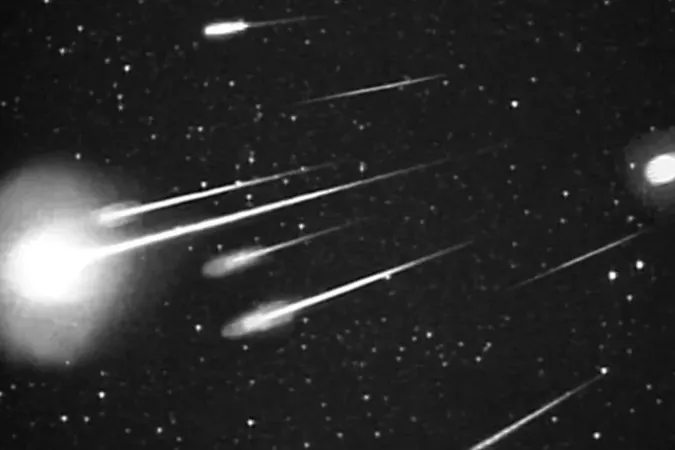
Your Ultimate Guide to the Leonids: Don’t Miss November’s Spectacular Meteor Shower!
2024-11-03
Author: Rajesh
Get ready for one of the most breathtaking astronomical events of the year as the Leonids meteor shower graces our skies this November!
These dazzling meteors, remnants of the ancient Comet 55P/Tempel-Tuttle, promise a show of fireballs and colorful streaks that are sure to captivate stargazers around the world.
Peak Viewing Times
From November 3 to December 2, the Leonids will light up the night sky, but mark your calendars for the peak viewing night—November 18 at approximately 1 a.m. ET.
For the best chance to witness this celestial spectacle, be on the lookout after midnight, especially on the night of November 17 leading into the early hours of November 18. The visuals of the meteors will be most impressive right before dawn.
Maximize Your Viewing Experience
To maximize your viewing experience, find the darkest location you can—away from city lights and pollution.
A rooftop in a bustling city like New York could serve as the perfect perch for unobstructed views. You don’t need fancy equipment; your own eyes are the best tool to catch the meteors streaking across the sky.
While the meteors will radiate from the constellation Leo, it's better to gaze in various directions. This enhances the likelihood of seeing longer, more vibrant trails of light.
Challenges This Year
This year, however, the celestial display faces stiff competition from the bright full moon, which will reach its peak illumination on November 15, just days prior to the shower's peak.
The moonlight might make it slightly more challenging to see some of the fainter meteors, but don’t let that deter you! Be patient and persistent, and you're likely to spot several brilliant fireballs.
The Speed of the Leonids
The Leonids are particularly notable for their speed; they travel at around 44 miles (71 kilometers) per second, making them one of the fastest meteor showers known to astronomers.
Fireballs, which are rare but stunning, originate from larger chunks of debris and can produce exceptionally bright displays. Some of these meteors appear to graze the Earth’s atmosphere, creating long, colorful tails that are mesmerizing to watch.
The Origins of the Leonids
These stunning meteors are not merely a coincidence; they are the result of Earth crossing paths with the debris trail left by Comet 55P/Tempel-Tuttle.
Discovered by Ernst Tempel and Horace Tuttle in the 1860s, this comet orbits the Sun every 33 years. During such years, we are fortunate enough to experience meteor storms bursting with activity. The last significant storm occurred in 2001, providing a stunning display that was remembered by many.
Prepare for an Unforgettable Experience
So, gather your friends and family, find a cozy spot away from the city's glow, and prepare for an unforgettable night under the stars.
Trust us, the Leonids will be worth the wait! Will you witness the sky come alive with shooting stars this November? Don’t miss out—start planning your meteor-watching adventure now!



 Brasil (PT)
Brasil (PT)
 Canada (EN)
Canada (EN)
 Chile (ES)
Chile (ES)
 España (ES)
España (ES)
 France (FR)
France (FR)
 Hong Kong (EN)
Hong Kong (EN)
 Italia (IT)
Italia (IT)
 日本 (JA)
日本 (JA)
 Magyarország (HU)
Magyarország (HU)
 Norge (NO)
Norge (NO)
 Polska (PL)
Polska (PL)
 Schweiz (DE)
Schweiz (DE)
 Singapore (EN)
Singapore (EN)
 Sverige (SV)
Sverige (SV)
 Suomi (FI)
Suomi (FI)
 Türkiye (TR)
Türkiye (TR)